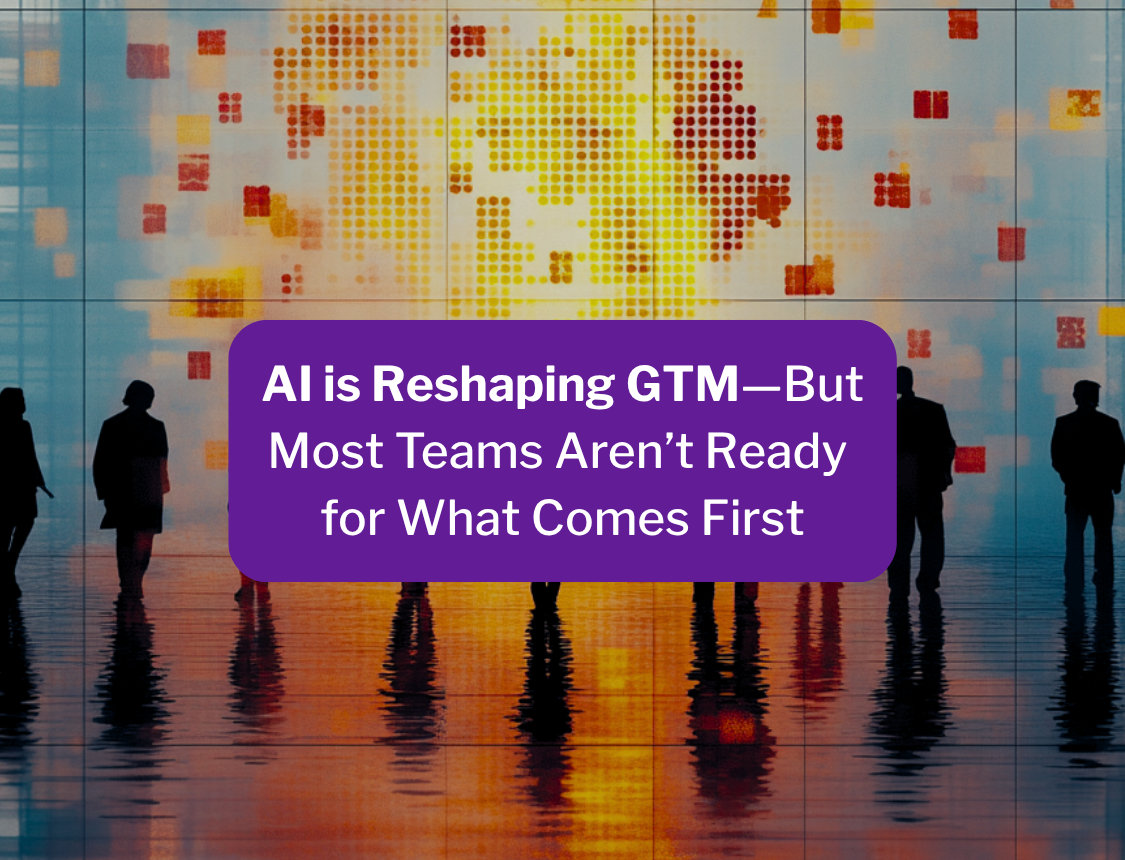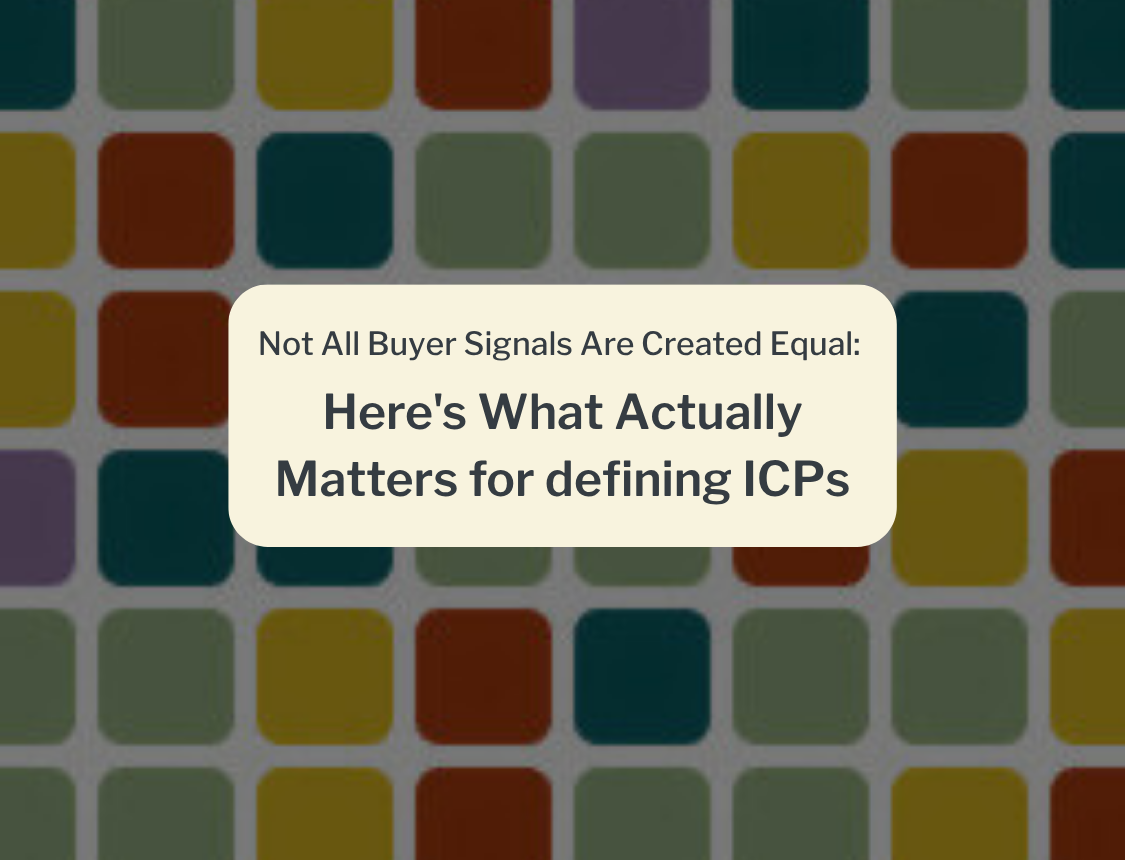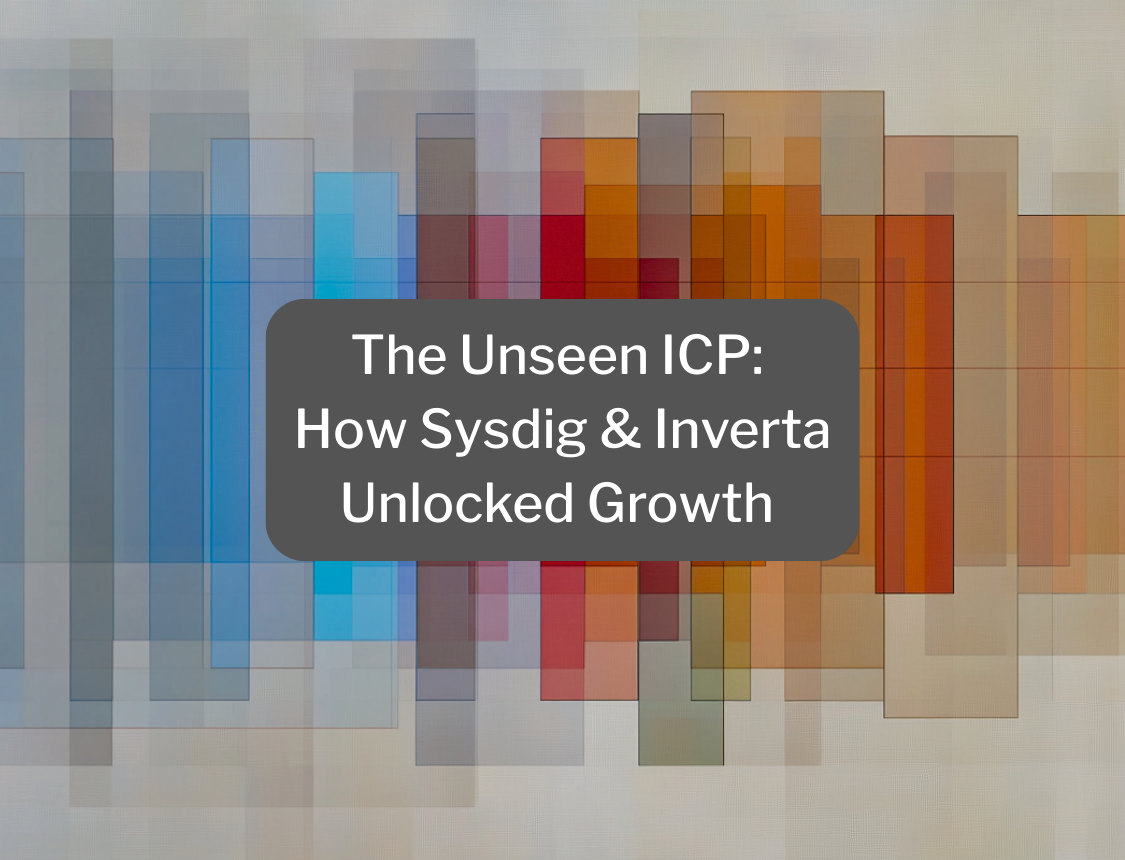
AI is Reshaping GTM—But Most Teams Aren’t Ready for What Comes First

A recent article by Mark Roberge and Topline Media lays out four phases of how AI will transform go-to-market strategy. What stands out most? The biggest disruption—dynamic ideal customer profiles (ICPs) that evolve in real time—isn’t coming later. It’s happening now. And most teams aren’t set up for it.
In the rush to apply AI across the funnel, something fundamental is breaking: the ability to clearly define who to target, why they matter, and how to prioritize them. After three years of building and automating ICP discovery, we’ve seen it firsthand—this gap is real, and it’s quietly costing the recurring revenue economy billions of dollars annually.
The era of the static, spreadsheet-defined ICP is over.
The future belongs to adaptive ICP agents—tools that continuously analyze micro-segments, unit economics, and retention signals to refine not just who you target, but how you build around them. This is how companies will start pursuing product-market fit and go-to-market fit—together, and in real time.
But unlocking that future means tackling three systemic barriers most GTM teams are still carrying forward.
The Unspoken Pressure Behind the GTM Machine
If you lead go-to-market at a B2B SaaS company, you know the weight that sits on your shoulders.
The number.
Every quarter, it grows. Every board meeting, it’s dissected. Every downturn, it becomes existential.
✔️You’ve optimized your funnel.
✔️You’ve restructured your teams.
✔️You’ve deployed ABM, PLG, and every acronym that promised efficiency.
And yet—the pipeline still slips. The forecast still wobbles. CAC creeps higher while retention softens.
If this sounds familiar, you’re not alone. The problem isn’t effort or execution. It’s that the data powering your GTM motion was never designed for the complexity of today’s market.
That’s exactly where AI changes everything.
AI in GTM: A New Chapter, Not a New Tool
In Mark Roberge’s recent article mentioned above, he shares how AI will reshape GTM in four phases.
He suggests most companies haven’t even entered Phase I—where AI begins to automate ICP discovery and guide go-to-market execution.
What’s profound about this shift isn’t just the technology—it’s what it liberates us from.
For decades, GTM leaders have been making high-stakes decisions with partial visibility:
- Marketing is optimizing for leads, not revenue.
- Sales is chasing what’s easy to close, not what’s right to retain.
- Product is building for today’s loudest customers, not tomorrow’s market.
AI introduces the ability to synchronize these perspectives—to finally create a dynamic, living definition of the Ideal Customer Profile (ICP) that evolves in real time.
It’s not about dashboards. It’s about alignment.
And alignment is the difference between teams hitting their number—or missing it by 12% and explaining why.
The Data Reality No One Wants to Admit
At AlignICP, we’ve spent three years automating ICP discovery and account selection for SaaS companies.
We’ve learned the hard way: AI is only as powerful as the data it’s given.
The majority of CRM systems—the backbone of modern GTM—are data junkyards. Inaccurate fields, inconsistent deal data, outdated industry codes, missing customer outcomes.
When AI models try to learn from that chaos, the output is as unreliable as the input.
Before any AI can help a GTM team grow smarter, there is a step that needs to take place where we create a marketing database that sits parallel to a CRM—cleaning, unifying, and enriching GTM data so it reflects the truth of your market. Without it, every segmentation model is a mirage.
And this matters emotionally too—because GTM leaders don’t just lose accuracy when data is messy. They lose trust. Trust in forecasts. Trust between sales and marketing. Trust in what’s working and what’s not.
The Missing Framework: Why ICPs Keep Failing
There’s no standard framework for defining an ICP.
Most companies still treat it as a static exercise—a slide in a QBR deck that gets refreshed annually.
We’ve seen this in over 95% of SaaS companies. The typical ICP is built on firmographics (company size, industry, region) and qualitative hunches from sales.
What it rarely includes? Revenue impact.
At AlignICP, we take a different approach.
We convert bookings data into revenue models, correlating customer traits with retention, expansion, and inbound demand.
When you measure ICP quality in terms of revenue efficiency, you stop guessing who your best customers are—and start seeing it in your numbers.
That’s what makes an AI-ready GTM foundation: a model that knows who to sell to, why they stay, and how much they’re worth over time.
The Emotional Cost of Misalignment
Every revenue leader has felt it—that creeping frustration when metrics don’t line up:
- Marketing is celebrating SQL volume while sales is missing quota.
- Product is celebrating new feature launches while CS is firefighting churn.
- The board is asking why the company’s “ICP” isn’t driving growth.
This is the emotional tax of misalignment.
It shows up as burnout, turnover, and “strategy fatigue.” It’s not because people aren’t doing their jobs—it’s because they’re not rowing in the same direction.
The deeper issue?
Most companies are optimizing for easy-to-close customers, not profitable-to-keep customers.
We’ve analyzed dozens of SaaS portfolios, and in fewer than 15% of cases were the easiest to acquire customers also the same customers with the highest likelihood to retain and expand.
That false correlation leads directly to the revenue trap:
- You chase short-term wins.
- You contort your roadmap for big, noisy logos.
- You slowly lose product-market fit.
And then—despite the heroic effort—you still miss the number.
Why Dynamic ICPs Are the Antidote
A dynamic ICP changes everything.
Instead of being a static document, it becomes a living intelligence layer—constantly analyzing where retention is strongest, where LTV is highest, and where expansion potential is untapped.
It doesn’t just tell you who your best customers are—it tells you when that answer changes.
This is what enables product-market fit and GTM fit to evolve in parallel.
Your product roadmap can respond to the same segments that your go-to-market motion is optimizing for, closing the loop between growth and retention.
In essence, it gives every leader—from CMO to CRO to VP of Product—a shared definition of who matters most.
And when everyone knows who matters most, everything accelerates:
- Marketing spends less and converts more.
- Sales targets accounts with the highest lifetime value.
- Product builds features for customers who will actually grow with them.
Alignment stops being an aspiration—and becomes a measurable advantage.
The Path to Efficiency: Lessons from Vertical SaaS
Investors have long loved vertical SaaS companies because they scale with discipline.
David Spitz’s research shows they can grow at the same rates as horizontal peers while spending over 40% less on sales and marketing.
Why? Because everyone in the company knows the “who.”
They don’t just have an ICP—they live it.
AI makes it possible for every company, vertical or not, to operate that way.
A dynamic ICP allows you to scale precision—bringing vertical-level efficiency to horizontal markets.
That’s how modern GTM leaders win—not by spending more, but by aligning better.
The Emotional Reward of Alignment
When you finally see the data align, something shifts.
The weekly revenue meeting feels different. The forecast call stops being an argument. Marketing and sales start using the same language again.
That sense of control—the confidence that the company’s growth strategy is working with reality, not against it—is what every GTM leader is really chasing.
Because hitting your number isn’t just about numbers.
It’s about clarity, confidence, and conviction—knowing that your effort is aimed in the right direction.
AI doesn’t replace that human drive.
It amplifies it—by giving leaders a clearer signal in the noise.
Looking Ahead: The Road to Phase II
If Phase I of AI in GTM is about automation and discovery, Phase II is about autonomy and orchestration.
Where ICPs evolve in real time, and AI systems adjust campaigns, pricing, and targeting dynamically based on live performance data.
That’s where we’re headed.
And at AlignICP, we’re building the infrastructure to make it possible—helping revenue teams unlock focus, confidence, and alignment through AI-powered ICP automation.
Because the next generation of market leaders won’t be the ones who spent the most.
They’ll be the ones who knew who they were selling to—and stayed aligned while doing it.
At AlignICP, we’re turning ICPs into living assets—so every CMO, CRO, and VP of Demand Gen can lead with confidence, clarity, and conviction in a world where AI reshapes growth itself.
.svg)

